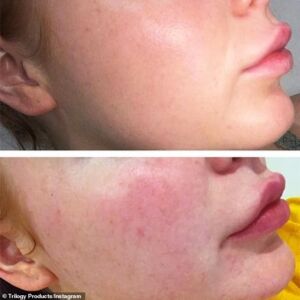Laser Resurfacing for Sun-damaged Skin : Laser resurfacing is a procedure that uses a wand-like laser instrument to remove the upper layers of skin. It is sometimes referred to as “laser peeling†since it removes old skin cells in order to reveal newer, more youthful cells. Since the technique uses a laser, an ASDS dermatologist has precise control over the depth of treatment, lessening complications to surrounding tissue. An antibiotic or antiviral medication is sometimes prescribed prior to the procedure.Laser Resurfacing for Sun-damaged Skin
What you should know about laser resurfacing for sun-damaged skin
The technique directs short, concentrated pulsating beams of light at sun-damaged skin, precisely removing skin layer by layer. In this way, damaged skin can be removed in a very precise manner, one layer at a time. Laser resurfacing results in fewer problems with hypopigmentation, or lightening of skin.
Why choose laser resurfacing for sun-damaged skin
Laser resurfacing works primarily by removing the top layer of damaged skin. It also heats the layers underneath to promote collagen production, which stimulates skin in the treatment area to heal in a smoother, more even appearance.
What to expect after the procedure
Following treatment, your ASDS dermatologist will bandage the treatment area. Patients will be required to:
- Clean the treatment area after the first 24 hours, and then four to five times a day thereafter.
- Apply an ointment, such as petroleum jelly, after cleanings to prevent scabs from forming.
Laser resurfacing patients can also expect the treated area to:
- Swell for 24 to 48 hours after treatment.
- Itch or sting for 12 to 72 hours after treatment.
- Slough and peel off old skin five to seven days after treatment.
Healing typically takes 10 to 21 days, depending on the size and location of the procedure. After the treatment area is fully healed, patients should:
- Use only oil-free makeup for at least two to three months.
- Avoid sun exposure and apply an appropriate sunscreen to the area, which will have a lighter appearance following resurfacing.
- Keep new skin well-moisturized.
How to prepare for the procedure
Before the procedure, an ASDS dermatologist will usually review the patient’s medical history and conduct a physical exam. This is the time for the doctor and patient to discuss expectations, potential risks and outcomes of the procedure. Patients also should:
- Discuss any susceptibility to cold sores or fever blisters around the mouth since the procedure can trigger breakouts in at-risk individuals.
- Avoid medications or supplements that can affect blood clotting – such as aspirin, ibuprofen or vitamin E – for 10 days before surgery.
- Avoid smoking for two weeks before and after the procedure.
Possible risks
As with any treatment, there are risks associated with it, though they are minimized in the hands of a qualified ASDS dermatologist. These include:
- Pain
- Swelling
- Bleeding
- Scarring
- Crusting
- Discoloration

